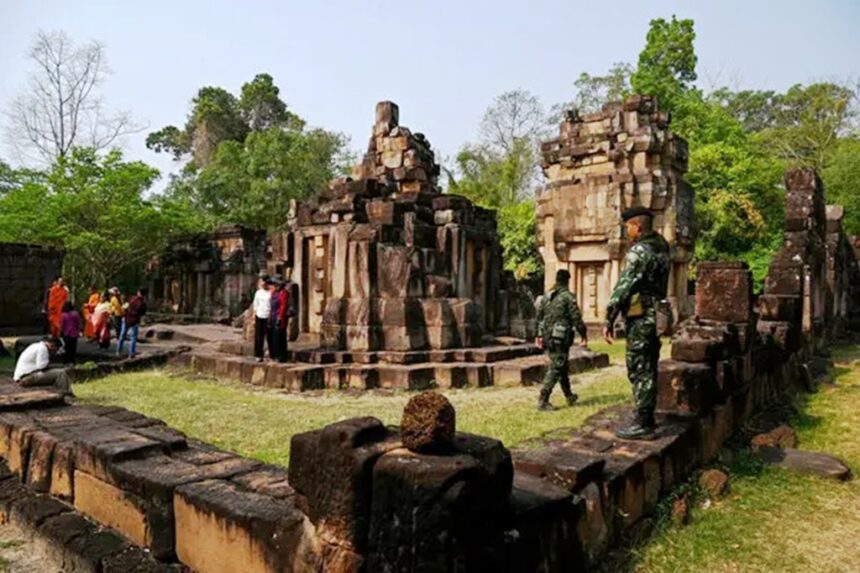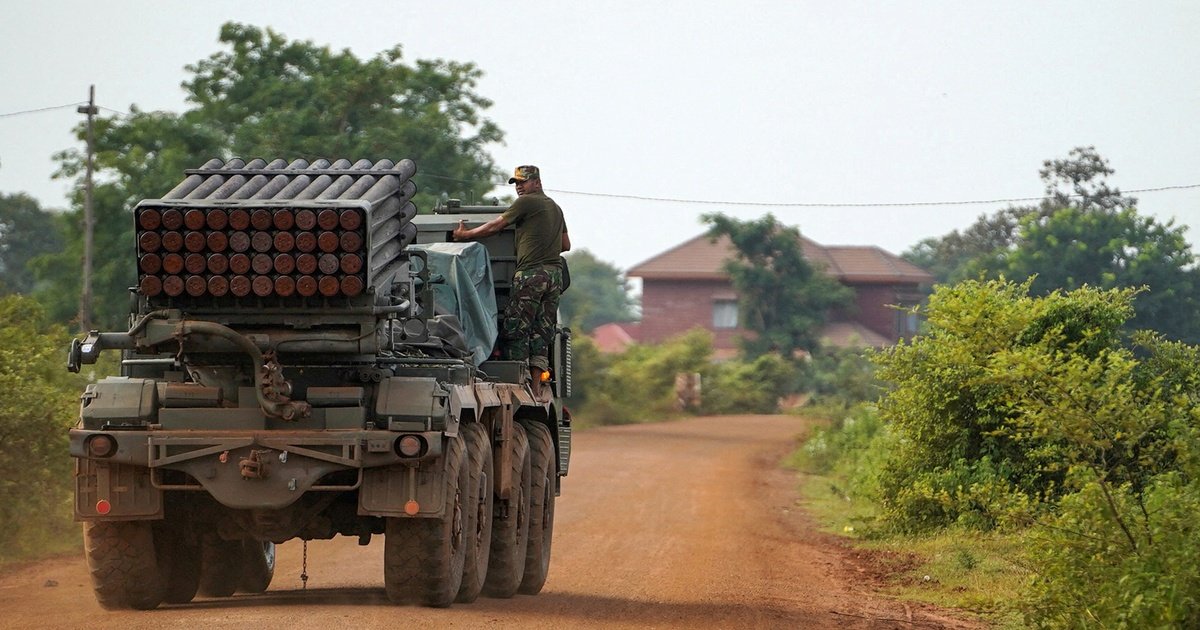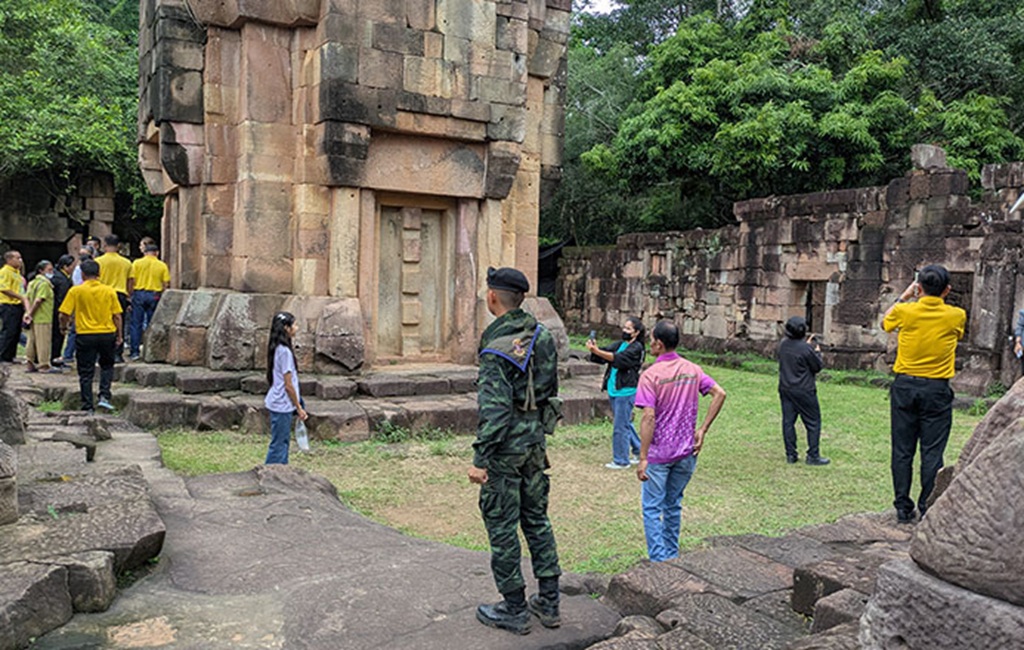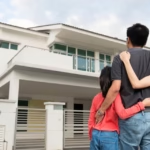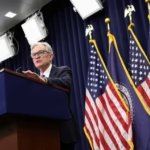BANGKOK – The Dangrek Mountains, which form a rugged line between Thailand’s Surin province and Cambodia’s Oddar Meanchey, have once again become a source of conflict. Prasat Ta Muen Thom, a Khmer-Hindu temple from the 12th century, stands at the centre of this renewed disagreement.
Built under King Udayadityavarman II for Lord Shiva, this temple is part of a group of historic structures that both Thailand and Cambodia claim as their own.
The most recent fighting, beginning on 24 July 2025, has been the worst in more than ten years, with at least 12 people killed, many wounded, and thousands fleeing their homes. While the violence has settled for now, the dispute over the temple remains, and the future for the site is still uncertain.
A Temple with Deep Roots
Prasat Ta Muen Thom, which means “Great Temple of Grandfather Chicken” in Khmer, shows the power and creativity of the ancient Khmer Empire, which thrived between the 9th and 15th centuries. The temple is made mainly of laterite stone with sandstone carvings of Hindu gods and a natural Shivling at its core.
Inscriptions in both Sanskrit and Khmer highlight its connection to the old Khmer highway that once ran between Angkor in Cambodia and Phimai in Thailand. The temple complex also includes two smaller sites: Prasat Ta Muen and Prasat Ta Muen Toch.
The latter, built by King Jayavarman VII, served as a hospital chapel. Set along a key mountain pass, these temples once assisted travellers and pilgrims crossing the borderland.
The temple’s position on a poorly marked section of the border has led to repeated disputes. Cambodia points to the reach of the Khmer Empire and older boundaries, while Thailand says its management of Surin province gives it rightful control.
The argument goes back to the colonial era, especially a French map from 1907 that put the nearby Preah Vihear temple in Cambodia. The International Court of Justice (ICJ) supported this decision in 1962 but didn’t address who owns Prasat Ta Muen Thom (ปราสาทตาเมือนธม). This lack of clarity has added fuel to nationalist feelings on both sides.
Recent Clashes and Their Causes
Tensions broke into open conflict on 24 July 2025 near the temple. Gunfire led to rocket strikes, drone deployments, and airstrikes by Thai F-16s. Thai officials said the violence started after Cambodian drones appeared near their military positions.
Cambodia’s Defence Ministry claimed Thai forces broke an agreement by approaching the temple, forcing them to defend their side. Former Cambodian leader Hun Sen accused a Thai commander on social media of starting the fighting by closing the temple and attacking Cambodian troops.
The clashes led to serious casualties. Thai officials said 11 civilians, including two children, and one soldier died across three provinces: Surin, Ubon Ratchathani, and Sisaket. Cambodia reported one soldier wounded but has not given full casualty figures. More than 131,000 Thais and 35,000 Cambodians had to leave their homes.
People like Chhin Sochulsa, a Cambodian farmer, were left with only what they could carry, struggling with little food or shelter. In response, Thailand raised its alert level, closed border crossings, and Cambodia reduced diplomatic ties and stopped importing Thai goods such as films, fruit, and fuel.
These problems did not start overnight. In February 2025, Cambodian soldiers at the temple sang their national anthem, upsetting Thai troops. A video of the incident went viral, stirring up strong feelings. Later claims of landmines and drone flights made things worse.
A leaked phone call with Thailand’s suspended Prime Minister Paetongtarn Shinawatra criticizing her army also caused political turmoil at home.
What Comes Next for Prasat Ta Muen Thom?
By 30 July 2025, the fighting had lessened. Both countries said they wanted to avoid more bloodshed. Cambodian Prime Minister Hun Manet called for a peaceful outcome but kept the army ready, while Thai officials accused Cambodia of breaking agreements regarding landmines.
The two sides had agreed in May to only five soldiers each at the temple, but trust is low. Cambodia has also asked the United Nations Security Council to get involved, showing they want international help to sort this out.
Ownership of the temple is still up in the air. Cambodia refers to its ancient heritage and the 1907 map, but Thailand relies on its control of Surin province and a 1935 record naming the temple as a Thai heritage site.
The ICJ’s 2013 ruling only covered the Preah Vihear temple, not Prasat Ta Muen Thom (ปราสาทตาเมือนธม), keeping this area in dispute. Online posts make it clear that people on both sides feel strongly, with Cambodians referring to Khmer origins and Thais to their administration.
Travel to the temple is now restricted and subject to army checkpoints. Cambodia continues to showcase the site as part of its heritage. Meanwhile, Thai officials have encouraged their citizens to visit and support local businesses, reinforcing Thailand’s claim to the area.
Immediate Concerns for Locals
Talks between the two governments are needed to avoid more violence. While Thailand supports direct talks, Cambodia prefers involving groups like the UN or the ICJ. Both aim to keep the conflict from growing, but social media and nationalist messages make compromise harder.
For many families like Chhin Sochulsa’s, the main focus is staying safe. Displaced communities face food shortages and money worries. Cambodia’s microfinance crisis and Thailand’s border closure have made life even tougher.
Old landmines left from the Khmer Rouge era add to the risk, and both countries blame each other for unsafe patrols.
Prasat Ta Muen Thom is more than just a point on a map. The Prasat Ta Muen Thom temple stands for a shared cultural tradition that goes back centuries, shown in its ancient carvings and Sanskrit writings. While both nations see it as a point of pride, the growing tension puts this history in danger.
Groups like ASEAN and UNESCO may help protect the site and promote joint efforts to care for it, perhaps by recognizing it as a shared asset.
Today, Prasat Ta Muen Thom temple stands quiet, bearing marks from both ancient history and recent fighting. As Thailand and Cambodia try to find a lasting answer, people around the world hope the two sides can agree on a solution that honours history and secures peace for the future.




